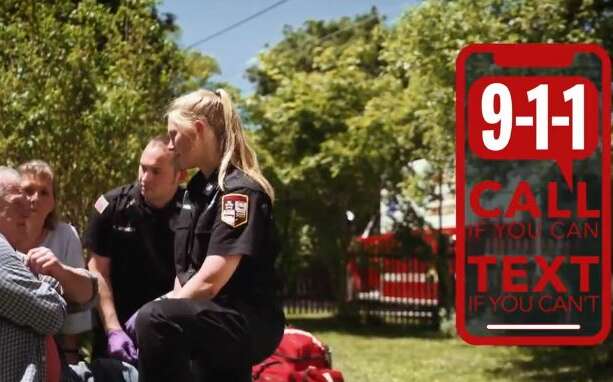
Processing Your Payment
Please do not leave this page until complete. This can take a few moments.
- News
-
Editions
View Digital Editions
Biweekly Issues
- December 1, 2025
- Nov. 17, 2025
- November 03, 2025
- October 20, 2025
- October 6, 2025
- September 22, 2025
- + More
Special Editions
- Lists
- Viewpoints
-
Our Events
Event Info
Award Honorees
- Calendar
- Biz Marketplace
Maine gets grant to enhance 911 emergency system
The Maine Public Utilities Commission has been awarded a $680,741 federal grant to improve 911 location information in Maine in light of increased use of cellphones to contact emergency services.
In 2018, Maine’s 911 system and public safety dispatchers handled more than 560,000 calls at Maine’s 24 public service answering locations, and more than 70% of the calls came from cellphones, according to the PUC's Emergency Services Communication Bureau, which manages the statewide 911 system and the answering locations.
Maine is one of 34 states to get funding from the U.S. Department of Transportation and the U.S. Department of Commerce to advance the development of next generation 911 systems. The funding comes as the state also launches an information campaign about 911 use in emergencies.
The federal funding will allow Maine to improve location information in the statewide emergency 911 system, which was first upgraded to NextGen in 2014.
“Maine is fortunate to already have a NextGen 911 system, including text to 911," said Commissioner Phil Bartlett in a news release. "This improved data will be provided through the NextGen 911 system to Maine’s 911 Public Safety Answering Points so they can dispatch first responders to more precise locations.”
NextGen 911 replaces narrow-band, circuit-switched networks with more effective digital architectures, according to govtechn.com. The technology goes beyond traditional voice exchange of information to deliver more kinds of data, including photo and video information.

Public education campaign
The PUC also recently launched two public service video announcements on using 911 and texting to 911. Both can be viewed on YouTube. One reminds viewers to remain calm and provide answers to three critical questions: what number they’re calling from, the address of the emergency and an explanation of it. The second one focuses on texting an emergency.
Emergency Services Communications Bureau rules require 911 calls to be answered in 10 seconds or less 90% of the time. "Maintaining and continuously improving Maine's statewide emergency 911 service is one of the commission’s most vital safety services for all Mainers," Bartlett said. “We train hundreds of dispatchers annually, and it is equally important to educate Maine people about effectively using the service.”
Emergency texting is a collaboration between the commission's Emergency Services Communications Bureau and wireless telecommunications carriers. Maine was among the first states to launch the advanced technology, the PUC said.
The Emergency Services Bureau first deployed text to 911 in 2014 using an older technology, in which two of the state’s 24 answering points answered texts for the entire state.
While texting an emergency may seem like a more efficient option, the PUC said the texting option should only be used when it's not possible to make a voice call to 911 — using a phone to call 911 is still the most efficient way to get emergency help.
It also offered these guidelines to texting in an emergency:
- Providing location information and the nature of the emergency in the first text message is imperative, since the answering points will not receive the location of the cell phone.
- Text abbreviations or slang should never be used so that the intent of the dialogue can be as clear as possible.
- Cell phone users must be in range of a cell tower in Maine. If they are outside or near the edge of the state, the message may not reach a Maine emergency communications center.
- Texts sent to 911 have the same 160-character limit as other text messages.
- No pictures, videos, or other attachments can be sent with these emergency communications.
The public service announcements were produced and directed by David Fuller of AirStream Pictures of Auburn, after he won a request for proposals issued by the commission. The commission used real first responders and dispatching staff in the PSAs.
About the Maine Emergency Services Communication Bureau
The Emergency Services Communication Bureau is the state agency responsible for 911 in Maine. In 2014, the state completed deployment of one of the first statewide Next Generation 911 systems. NG911 is designed to keep pace with the way people communicate today. Maine’s system includes voice and text, along with the foundation for the delivery of video and enhanced data to the Public Safety Answering Point as industry standards are developed and tested. Public safety officials continue to credit Maine's 911 system with saving lives and solving crimes, the bureau says.
Mainebiz web partners

The Giving Guide
The Giving Guide helps nonprofits have the opportunity to showcase and differentiate their organizations so that businesses better understand how they can contribute to a nonprofit’s mission and work.
Learn More
Work for ME
Work for ME is a workforce development tool to help Maine’s employers target Maine’s emerging workforce. Work for ME highlights each industry, its impact on Maine’s economy, the jobs available to entry-level workers, the training and education needed to get a career started.
Learn More
Groundbreaking Maine
Whether you’re a developer, financer, architect, or industry enthusiast, Groundbreaking Maine is crafted to be your go-to source for valuable insights in Maine’s real estate and construction community.
Learn more-
The Giving Guide
The Giving Guide helps nonprofits have the opportunity to showcase and differentiate their organizations so that businesses better understand how they can contribute to a nonprofit’s mission and work.
-
Work for ME
Work for ME is a workforce development tool to help Maine’s employers target Maine’s emerging workforce. Work for ME highlights each industry, its impact on Maine’s economy, the jobs available to entry-level workers, the training and education needed to get a career started.
-
Groundbreaking Maine
Whether you’re a developer, financer, architect, or industry enthusiast, Groundbreaking Maine is crafted to be your go-to source for valuable insights in Maine’s real estate and construction community.
ABOUT
NEW ENGLAND BUSINESS MEDIA SITES
No articles left
Get access now
In order to use this feature, we need some information from you. You can also login or register for a free account.
By clicking submit you are agreeing to our cookie usage and Privacy Policy
Already have an account? Login
Already have an account? Login
Want to create an account? Register
Get access now
In order to use this feature, we need some information from you. You can also login or register for a free account.
By clicking submit you are agreeing to our cookie usage and Privacy Policy
Already have an account? Login
Already have an account? Login
Want to create an account? Register







0 Comments